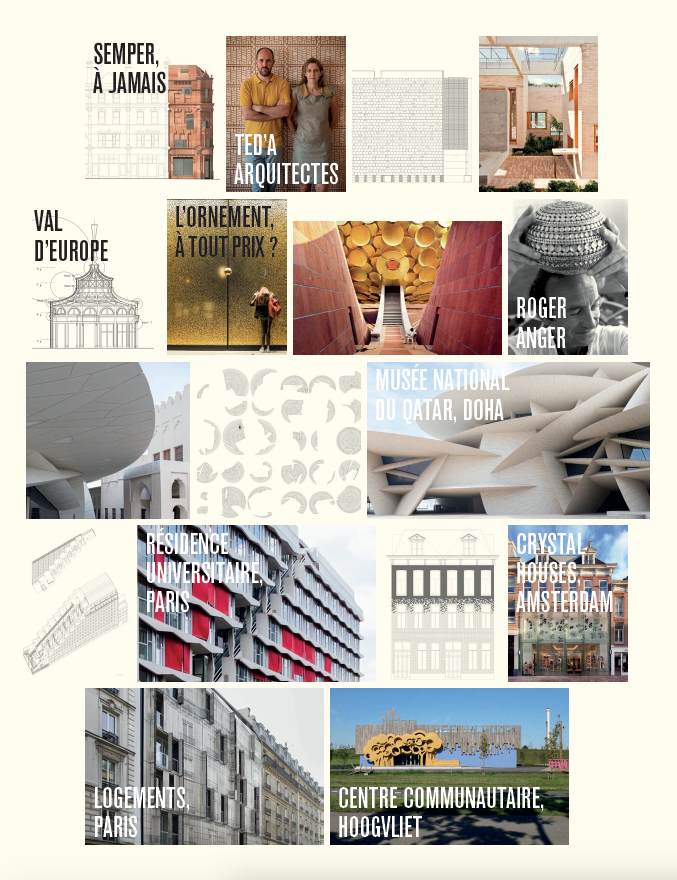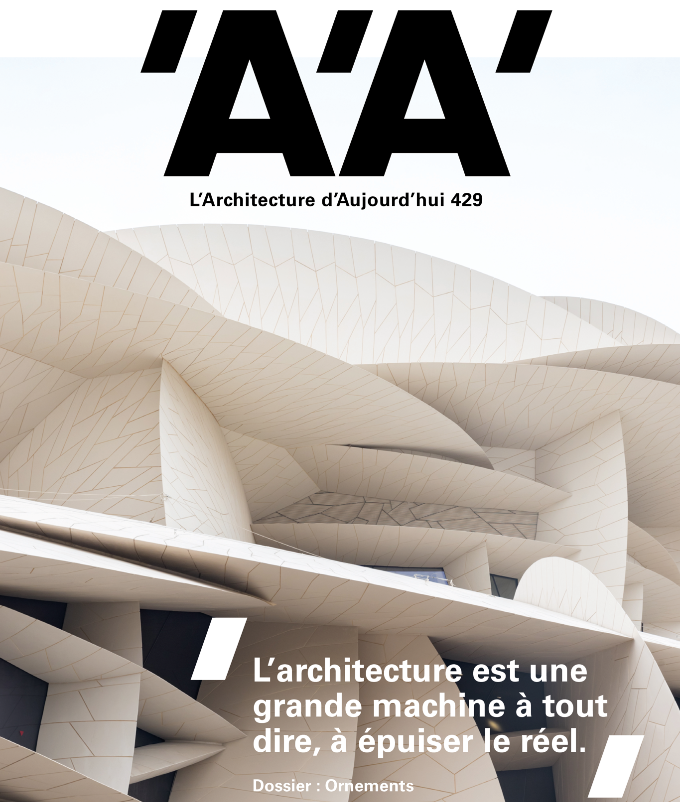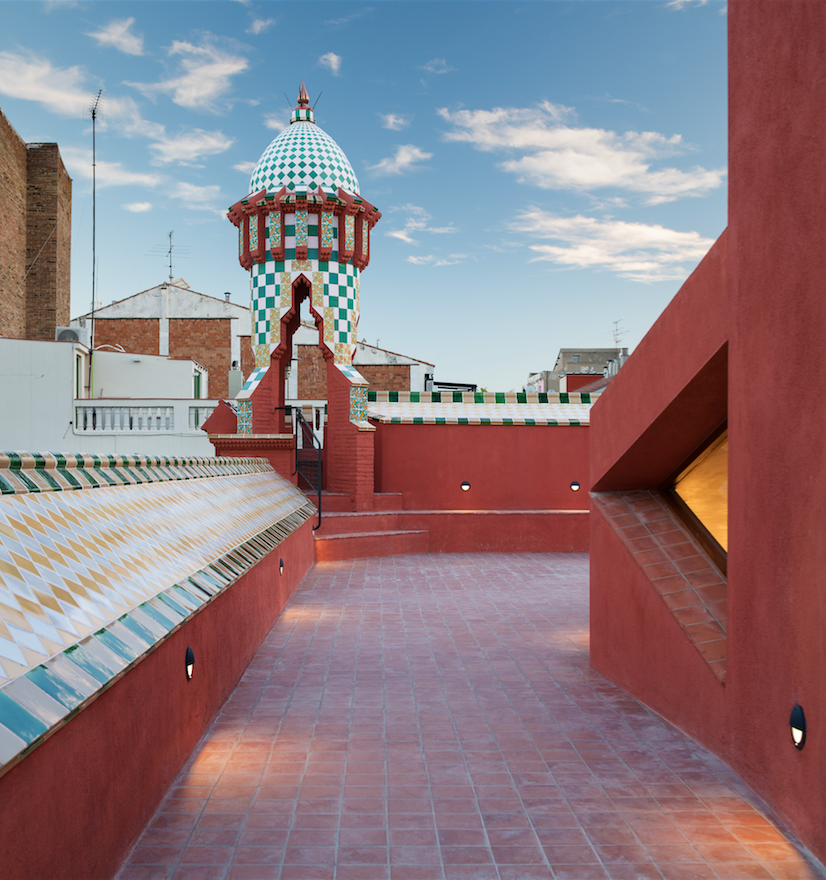FAT’s civic expression
Founded in 1990 and closed in 2013, FAT – for Fashion ArchitectureTaste – was a London-based of ce with flamboyant postmodern achievements. “FAT was a vehicle for critically opening up the culture of architecture rather than purely a conventional architectural practice”. Among FAT’s fundamentals, ornament and decor had as much of a semiotic function as they were architectural, as emphasised here by one of FAT’s founders, Sam Jacob, in a piece about an emblematic project, the Heerlijkheid centre, in the city of Hoogvliet.
For FAT the act of decoration was a radical attitude to architecture. In it we saw how issues of taste might be addressed. And through taste, ways to address the politics of value and class, as well as the possibilities of architecture to perform as a form of media itself. In an age where architectural culture prioritised formal complexity, we turned to an alternative approach where the surface and its treatments could become articulate. ‘Taste Not Space’ as our mantra at the time put it.
With the Heerlijkheid we found a project where we could test these ideas at scale, and in a collective, social context. Comprising a main building —the Villa— and a new landscaped park around it, the project functions as a community and arts centre. It was commissioned to provide a new civic focus for the Dutch post-war new town of Hoogvliet.
The starting point —like many of FAT’s projects— was the narrative of the wider context of the project. Physically, the site is surrounded by a landscape of bucolic nature, yet also bordered by Europe’s largest oil refinery and a highway. Socially, the town of Hooglviet suffered from a lack of social facilities, but there was also little cohesion between different local demographics. Coupled with its distance from metropolitan Rotterdam and its poor reputation, Hoogvliet suffered from what one might call an image problem. The production of image at architectural and urban scale became central to the project. An image that could function as a form of unique civic expression of a place and a community, rooted in the reality of its situation.
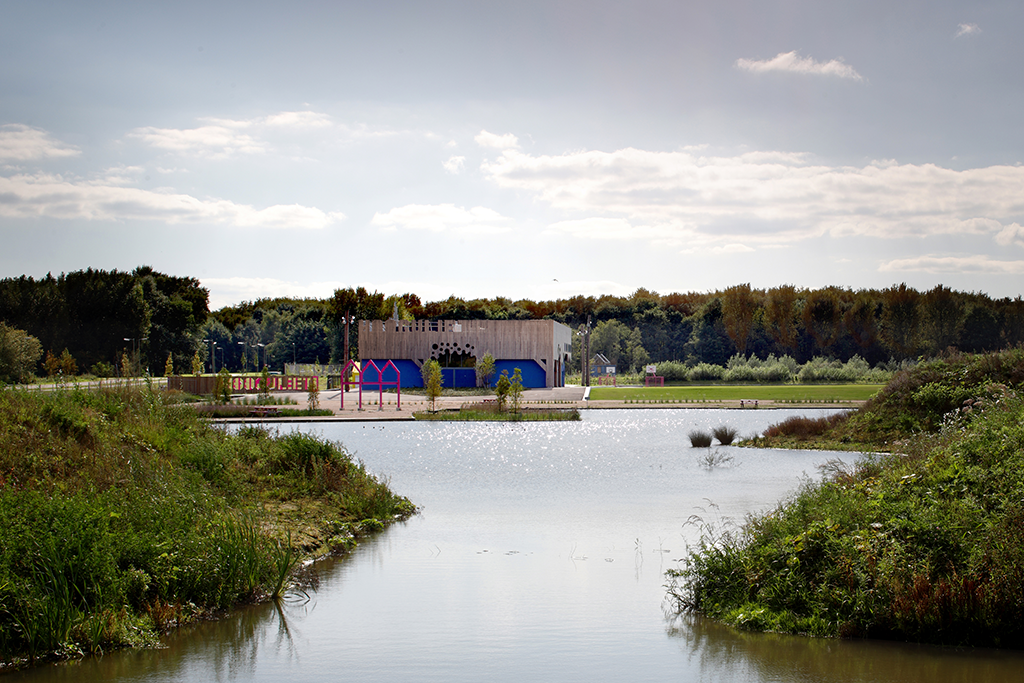
The Villa itself is, in some ways, a simple industrial shed. The kind of generic (and economical) building one might find next to a highway anywhere in the world.Yet through its decorative and communicative approach it becomes expressive, communicative and entirely specific to Hoogvliet’s own circumstance. The design deliberately oscillates between these two states, as ordinary and as special as Hoogvliet itself.
The building is clad in a figurative timber rain screen. Like a cartoon strip, its supergraphic line tells the story of Hoogvliet as it moves around the building. Above the entrance, a series of up-stands depict the pipes and chimneys of the oil refinery, visible beyond the park, which gave the town its raison d’être. As it progresses, the screen picks out the saw tooth rooftops of local industrial buildings, the structures of harbour infrastructure and tree canopies which represent the bucolic dream of Hoogvliet’s distant memory.
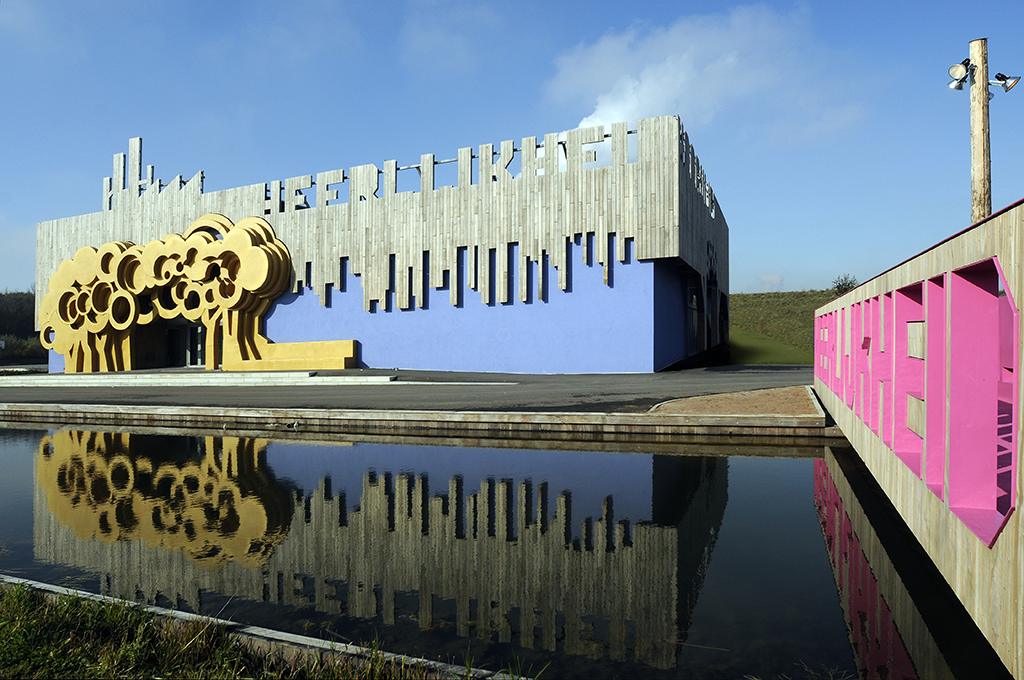
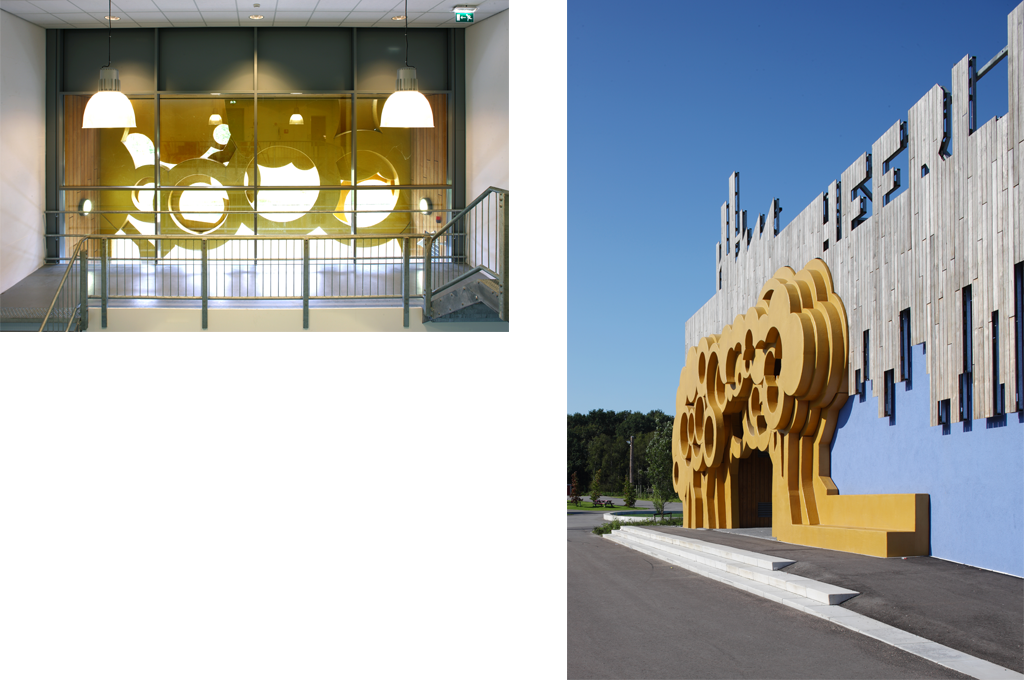
In doing so it makes reference to the specificity of Hoogvliet’s own landscape. The building’s image-narrative develops these references into an explicit architecture that projects an image that operates as a potential collective future —a kind of punk-pop contemporary civic architecture. A new civic image that could act as a unifying umbrella for the different groups who would use the building.
The most striking feature of the Villa is its main entrance — an extreme figurative representation of a golden forest glade that is both natural (in its reference) and industrially artificial (in its attraction and materiality). TheVilla’s interior continues this duality —both shed— like and intensely decorative through its bright pink steel structure and views out onto the park seem framed by the figurative details of the rain screen.
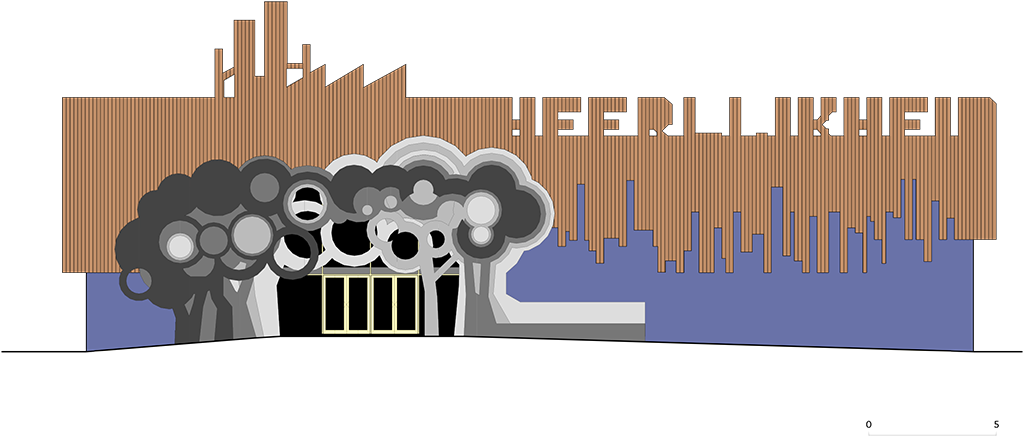

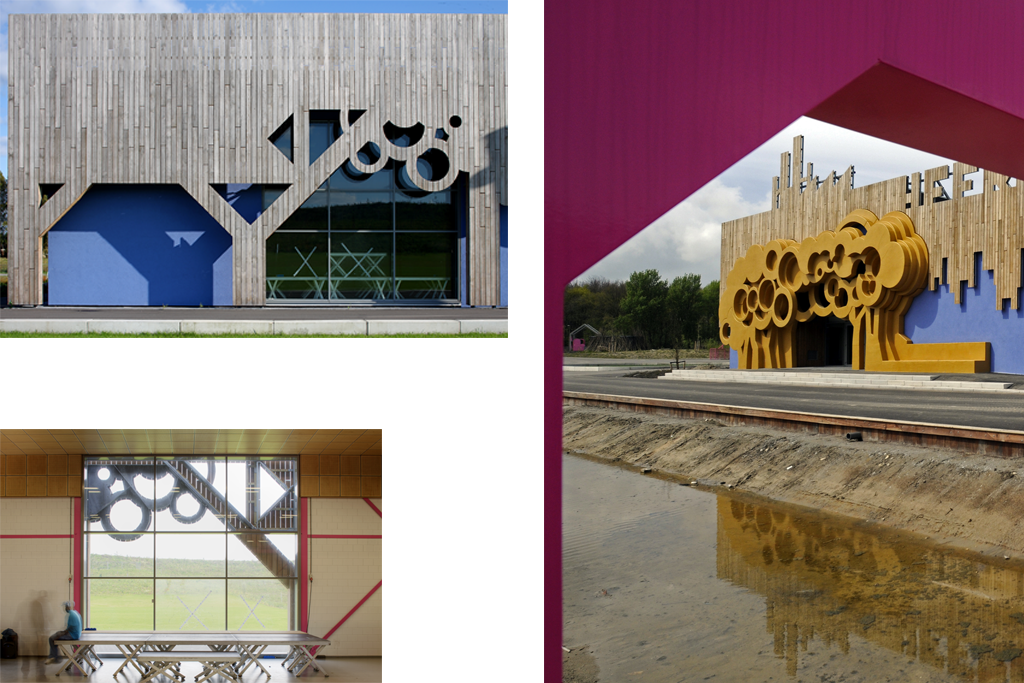
Appropriately for a building designed in close consultation with the multi-cultural community and in fulfilling its programmatic ambition to act as a what the Constructivists termed a ‘social condenser’, the building hosts events ranging from weddings, circumcision parties, dance nights, vegetable growing competitions and educational events for both school children and PhD programmes.
The park in which the Villa is sited is a suburban remake of grand aristocratic allegorical landscapes. It comprises bridges, seats and water features arranged both formally and in nature. Its follies are “hobby-huts” for the use of the local community, its bridges are billboard-like exclamations of civic pride and its sculptures are bar-b-que pits, pink picnic tables and basket-woven houses perpetually reconstructed by school children. A kind of Nintendoified picturesque landscape. The Heerlijkheid (‘loveliness’ in Dutch) uses its decorative approach to create a social armature. Its communicative architecture both frames and enables multiple kinds of use as stage set and apparatus anticipating forms of collective use. Its visual language plays out spatially with an attitude of ‘aggressive prettification’, as Denise Scott Brown described it, that asserts identify and creates participative collectivity though its everyday use.
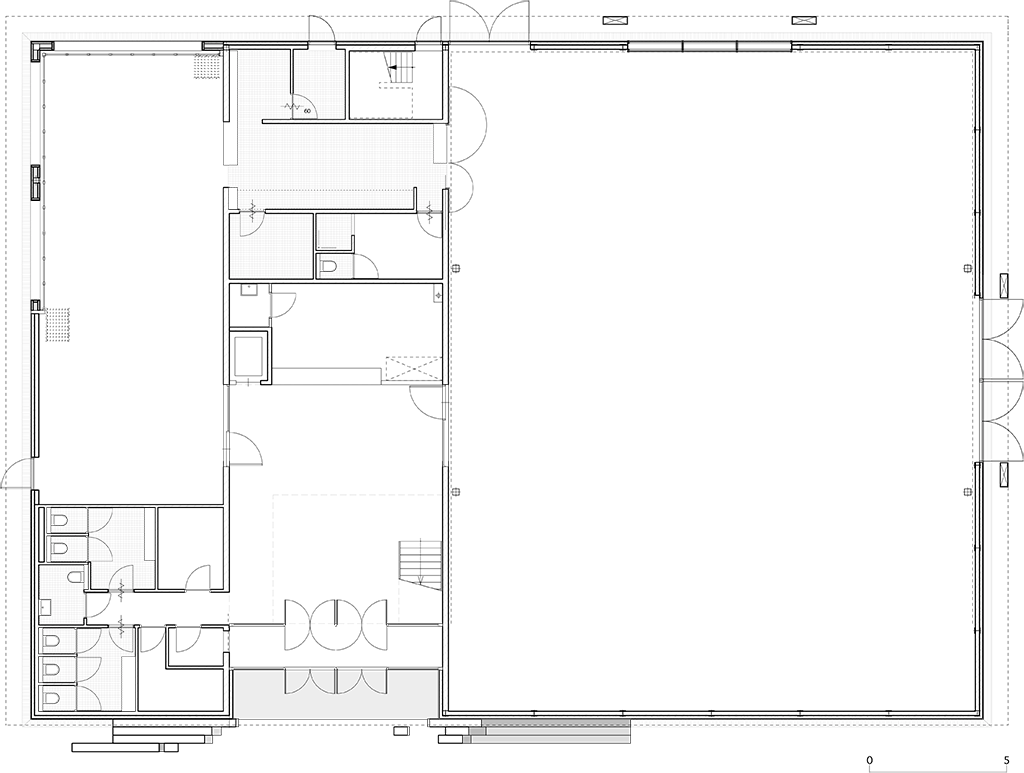
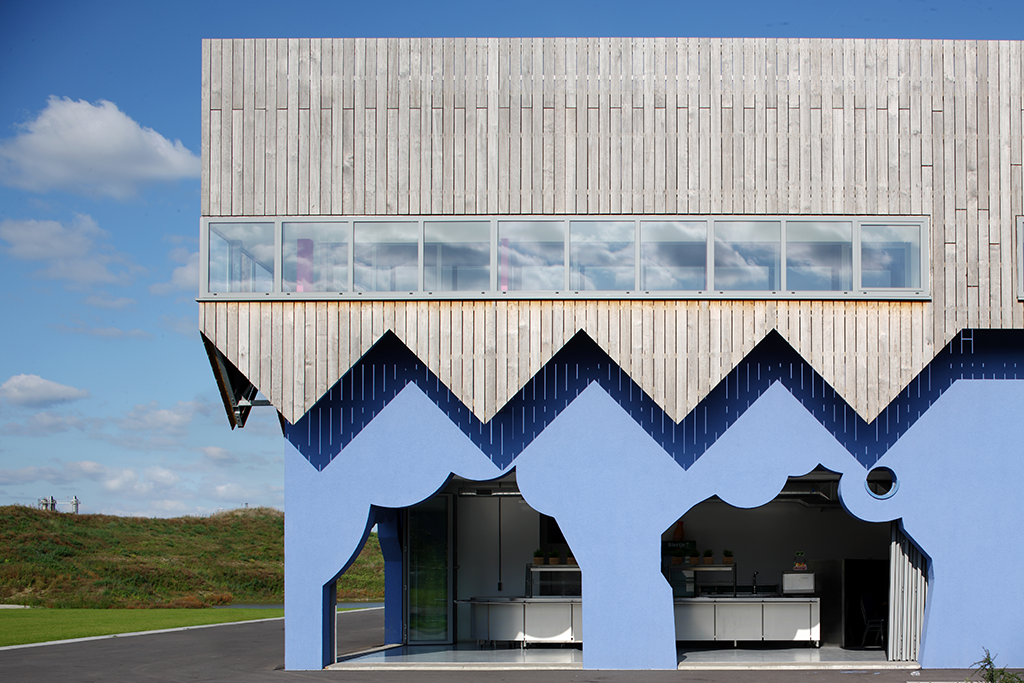
Architect: FAT Architecture
Korteknie Stuhlmacher Architecten
Programme: Multi-use hall, offices, and a café
Surface: The Villa: 700 sq. metres
The park: 5.4 ha
Completion: 2007
This article by Sam Jacob has been previously published on AA’s 429th issue – Ornament – released in March 2019. Buy your copy on our online shop.


